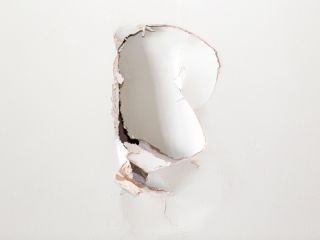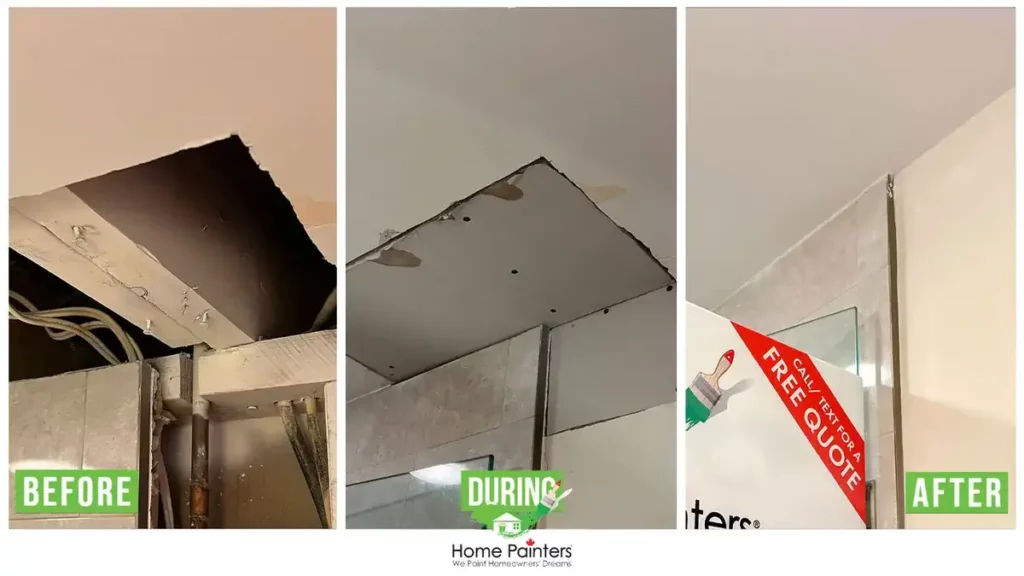Step-by-Step Approaches to Achieving Flawless Drywall Repair Service and Setup
Attaining perfect drywall fixing and setup calls for a methodical strategy. It involves comprehending the various sorts of drywall and the tools needed for the job. Correct location prep work is vital before starting any job. Interior Painting. Each action, from patching openings to mounting new sheets, demands interest to detail. The procedure doesn't end with installment; finishing strategies are crucial for a refined appearance. The next steps will ensure a smooth outcome, but just what do they entail?
Recognizing Drywall Kind and Equipment Needed

The installation tools are just as important. An energy blade is vital for cutting drywall sheets, while a drywall saw can help in making accurate cuts for fixtures or outlets. T-squares ensure exact dimensions, and drywall screws or nails secure the panels to wall studs. In addition, a drywall lift can help with the setup of huge sheets, minimizing physical strain. Experience with these devices and kinds considerably adds to the effectiveness and high quality of drywall jobs.
Preparing the Location for Repair or Installation
Preparing the area for drywall repair work or installment is vital to ensure a reliable and smooth procedure. First, the surrounding area should be free from furnishings and various other obstacles to offer adequate working room. This not only ensures safety and security yet additionally prevents damages to items. Next off, it is necessary to cover the flooring with ground cloth to capture any kind of particles or dirt created throughout the job.
In addition, the wall surfaces should be inspected for any loosened paint or wallpaper that might disrupt attachment. Eliminating these aspects creates a clean surface for the brand-new drywall. Prior to beginning, it is recommended to switch off power to electric outlets or components around. Making sure appropriate lights in the work space will further enhance presence and focus during the fixing or installment procedure. drywall contractor. By diligently preparing the location, one lays the groundwork for an effective drywall project
Step-by-Step Refine for Patching Holes

Covering openings in drywall requires a methodical approach to ensure a smooth repair. The very first action entails reviewing the size of the hole. For small holes, a patching compound might be adequate, while bigger openings demand a spot. Next off, the broken location ought to be cleansed and prepared by eliminating any kind of loosened particles.
For tiny holes, applying spackling compound with a putty blade is advised, smoothing it over the opening and feathering the edges. As soon as completely dry, fining sand the location ensures a smooth surface. For larger holes, a drywall patch should be reduced to dimension, placed over the opening, and safeguarded with screws. After mounting the spot, the exact same spackling process is repeated, followed by fining sand.
The patched location needs to browse around here be keyed and painted to match the surrounding wall surface. This careful process guarantees a professional look and prolongs the life expectancy of the repair service.
Setting Up New Drywall Sheets: A Comprehensive Guide
Mounting new drywall sheets requires mindful planning and execution to assure a tough and aesthetically attractive coating. The location needs to be measured properly to identify the number of sheets required. It is important to choose the ideal thickness, typically 1/2-inch for indoor walls and 5/8-inch for ceilings or fire-rated applications.
Next, the studs or structure ought to be evaluated for any type of abnormalities, making certain they are straightened and correctly spaced. When placing the drywall sheets, they must be placed horizontally to lessen joints and improve structural honesty. A drywall lift can be helpful for overhead installments.
Fastening the sheets with drywall screws at suitable periods ensures a safe and secure installment. It is essential to countersink the screws slightly below the surface to plan for the completing procedure. Following these guidelines will certainly result in a strong foundation, prepared for the next action in drywall completing.
Completing Touches: Insulation, Mudding, and Fining Sand Strategies
As soon as the drywall sheets are securely fastened, the focus shifts to the complements that will provide a polished appearance. This process begins with taping, utilizing either paper or fiberglass mesh tape to cover the seams in between sheets. The tape ensures a smooth shift, decreasing the risk of cracking. Adhering to insulation, mudding is crucial; a joint compound is applied over the tape to fill voids and develop a seamless surface area. Commonly, numerous layers are needed, each one feathery out additionally than the previous to minimize presence.
After enough drying time, sanding is the last step in accomplishing a perfect finish. A fine-grit sandpaper is utilized to smooth image source the dried substance, guaranteeing there are no bumps or flaws. Focus to detail throughout this stage is considerable, as it substantially influences the overall appearance of the wall. The end outcome must be an even, professional-looking surface all set for priming and painting.
Frequently Asked Inquiries
Exactly how Do I Choose the Right Drywall Density for My Job?
To choose the right drywall density, think about the project's objective, location, and architectural demands. Standard densities include 1/2-inch for general usage and 5/8-inch for fire-rated applications, guaranteeing durability and compliance with building regulations.

Can I Mount Drywall Over Existing Drywall?
Yes, mounting drywall over existing drywall is possible. Nevertheless, it is crucial to ensure the underlying surface area is safe and complimentary from damages. Proper fastening and factor to consider of density are important for a successful installment.
What Are the very best Practices for Drywall Disposal?
The most effective techniques for drywall disposal consist of recycling when possible, utilizing neighborhood waste administration services, and following standards for harmful materials if relevant. drywall contractor. Effectively labeling and securing waste warranties conformity and safety and security throughout disposal
Exactly how Long Should I Wait for Mud to Dry Before Fining sand?
Typically, one need to wait 24-hour for drywall mud to completely dry prior to sanding. Drying out time can differ based on humidity and temperature, so examining for a company structure is recommended before continuing.
Exist Eco-Friendly Drywall Options Available?
Yes, eco-friendly drywall alternatives are readily available. These choices commonly use recycled materials, low-VOC adhesives, and sustainable production methods, lowering ecological impact while providing effective insulation and longevity explanation for various building and construction and renovation jobs.
An energy knife is crucial for reducing drywall sheets, while a drywall saw can help in making accurate cuts for fixtures or outlets. Preparing the area for drywall fixing or installation is crucial to assure a smooth and efficient procedure. Covering openings in drywall requires a methodical strategy to guarantee a seamless repair work. Mounting new drywall sheets needs cautious preparation and implementation to guarantee a tough and visually enticing finish. Yes, setting up drywall over existing drywall is feasible.